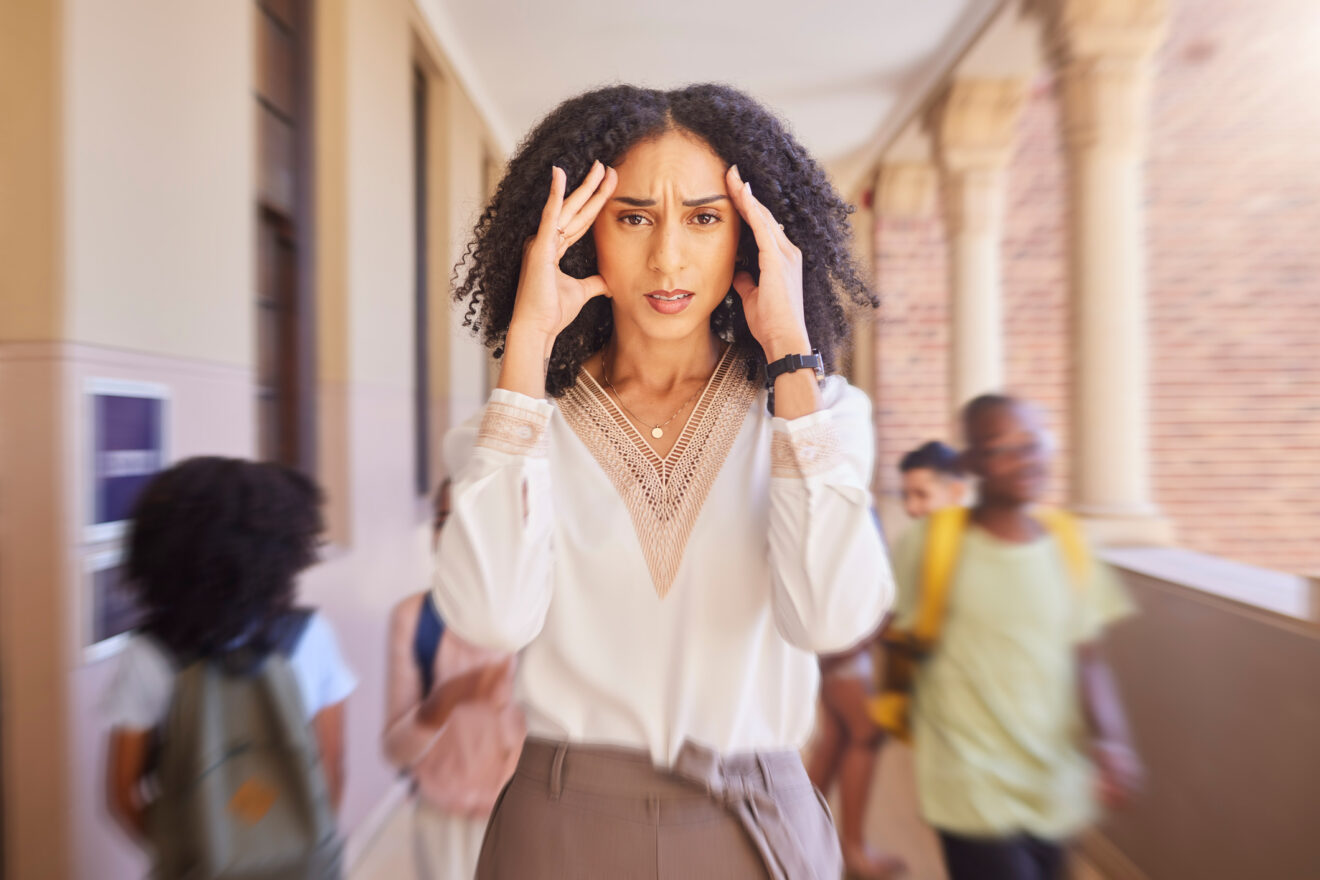
Each year, $18 billion is spent on teacher professional development, and teachers spend more than a week’s worth of time participating in them. The vast majority of this professional development is focused on giving teachers more instructional strategies, applications of technology, tools and methods. Is this really what teachers need?
From teachers’ perspectives, professional development is all too often perceived as not relevant, not effective and not connected to their core work of helping students learn. Instead, it’s simply another thing that teachers have to do that consumes time they feel would be better spent planning and grading in their classrooms.
More, more, more is not what teachers need
The pandemic has only accelerated this trend. Under the pressure of the pandemic-created learning gaps, schools and districts are implementing more new mandates, initiatives and instructional approaches that teachers have to be trained on and execute under ever-tightening systems of control. Not only does this add to an already unsustainable burden on educators, many of these mandates reduce teacher agency, deprofessionalizing teaching, which makes teachers more inclined to want to leave. A recent study out of Finland demonstrates a clear link between reduced teacher agency and burnout.
When the burden increases and agency decreases, people burn out. Right now in America, teachers are the most burned-out employees in the nation. As more teachers burn out, the teacher shortage gets worse, which increases the strain on the teachers who remain, leading to more teachers leaving. Clearly, unless we do something different, education is headed toward disaster.
Instead of finding ways to support current teachers to remain in education, most states are trying to address the teacher shortage by fast-tracking the teacher certification process, staffing classrooms with teachers even less prepared for the challenges they will face.
So, how do we get out of this mess?
Being vs. doing: A different approach
What teachers need are approaches to teaching that require less from them, but that offer high yields when it comes to student learning.
One approach that I have found successful for the educators I work with is focusing more on the state of being that teachers bring to their classes rather than what they do. When teachers are able to bring their most relaxed, open, best versions of themselves to their students, it not only allows them to reconnect with their own passion for teaching, it benefits the students as well.
Brain research explains why. In stressful situations, the control centers in our brain shift from the prefrontal cortex (the part of our brain that runs our highest cognitive faculties, such as concentration, insight, creativity and planning) to the more reactive survival parts of our brain (specifically the limbic system). When our survival brain is in charge, our perspective narrows, and we forget many of the tools we’ve collected through all that professional development we’ve taken. We become emotional, reactionary. The more stress we are under, the less effective we become.
Researchers are beginning to look into links between student learning and a teacher’s emotional state. A study involving 1,102 German elementary school students, designed to explore the association between teacher well-being and student mathematics achievement, found that teachers’ emotional exhaustion correlated with significantly lower student mathematics achievement. An early systematic review of studies exploring the consequences of teacher burnout on students confirms the correlation.
Turning mirror neurons to a teacher’s advantage
The emotional and mental states of human beings are contagious. Mirror neurons explain why. Mirror neurons are a specialized type of brain cell that mimic the firing pattern of the people nearby. This means that when a teacher is anxious, frustrated and stressed, the mirror neurons of her students will fire accordingly, effectively shifting students out of learning mode and into survival mode themselves. When both teacher and students are operating from the lower, reactive parts of their brain, student resistance to learning and classroom management issues increase, which drives the teacher more deeply into stress and frustration, further driving students into their reactionary brains.
This cycle can undermine effective teaching and learning. However, if the teacher is able to continuously teach from her own best-self-learning brain, the mirror neurons of her students will fire in tune with that, creating a learning environment in which the teacher has access to her best strategies and the students are in the best mindset for learning. This makes the teacher’s job easier. Because the teacher has access to her prefrontal cortex, she can, on the fly, apply the strategies she’s learned to best address the needs of the situation.
PD centered on teacher well-being
What teachers need to meet the current challenges in education is professional development that helps them teach in a way that is least costly for them while maximizing student learning.
In Teach From Your Best Self workshops, teachers are guided to first understand why the version of themselves they bring to their classroom matters so much and how they can retain that best self even under the tumultuous conditions of teaching. One frame I offer to teachers is an application of the economics principle of return on investment to teaching.
Return on investment is a formula investors use to measure the profitability of a particular investment by dividing the profit by the cost, giving the investor a percentage that can be compared with other investment choices.
Everything can’t be a priority
One of the biggest challenges teachers face is that everything they are expected to do is presented as urgent and necessary. There is no built-in support or framework that would help teachers prioritize the tasks that matter most. ROI gives teachers a way to cut through the noise and prioritize.
Whereas investors invest money to make more money, teachers invest their time, energy and attention to facilitate student learning. It’s important to recognize that a teacher’s time, energy and attention are finite resources. Investing those resources on one thing leaves them with less left over for everything else. Just like investors, teachers want a big payoff for each investment. Because what teachers need — an ongoing, full reservoir that lets them, day in and day out, stay in their whole brains and continue to bring their best — we can’t afford to continue to demand that teachers expend themselves to depletion.
By applying ROI to teaching, teachers can begin to prioritize the tasks that cost them the least but that yield the greatest student learning. Coaching and guiding teachers to make these kinds of decisions can lead them toward greater success with less wear and tear on themselves.
This creates a positive feedback loop. Less wear and tear on the teacher means it becomes easier for the teacher to bring his best to his students. This makes it more likely that students will respond to the teacher from their best, making the teacher’s job of bringing his best that much easier.
How administrators can help
When administrators get on board, school procedures and policies can be redesigned to take things off teachers’ plates that are both costly to teachers and that yield negligible learning results, leaving more time, energy and attention for teachers to do the things that actually increase student learning.
Giving teachers the support they need to create and sustain this positive feedback loop. Let them bring their best and inspire the best from their students. This offers a much greater ROI than continuing to train teachers to use more teaching tools and methods.
When ROI is used as a framework for developing state and national education policy, education can be reformed in a way that is both sustainable for teachers and best for students.
Jay Schroder has taught high school in both traditional and alternative education settings for 24 years. In 2021, the Oregon Council of Teachers of English awarded Schroder the High School English Teacher of Excellence Award, and in 2022, Jay received the High School Teacher of Excellence Award from the National Council of Teachers of English. He is an educator, teacher trainer and the author of ”Teach From Your Best Self: A Teacher’s Guide to Thriving in the Classroom.”
Opinions expressed by SmartBrief contributors are their own.
_________________________
Subscribe to SmartBrief’s FREE email ASCD newsletter to see the latest hot topics in education. It’s among SmartBrief’s more than 250 industry-focused newsletters.
